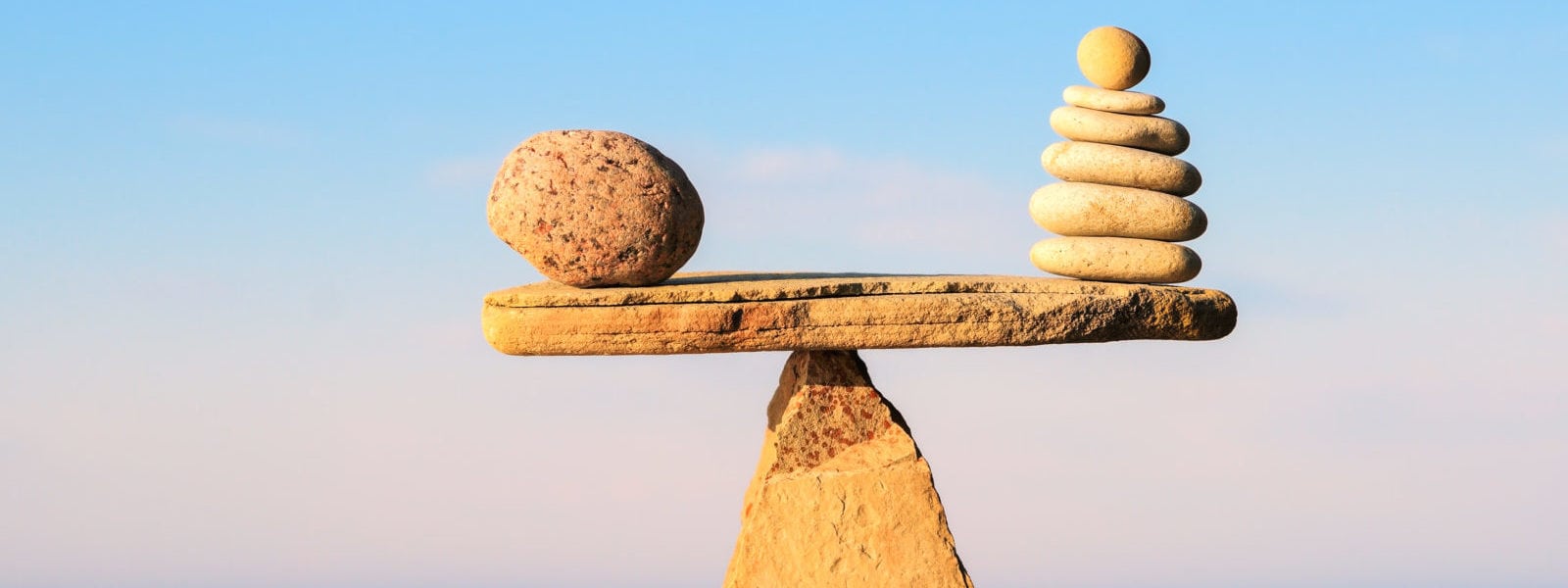
This is a guest post by Tom Casano, the founder of Life Coach Spotter, where you can connect with a life coach to find your purpose in life, reach your goals, and be more productive. Learn more about how to change your life with their Complete Guide to Changing Your Life.
There are never enough hours in a day to get everything done that you need to do. Forget what you WANT to do; simply making it through the day without major failure is often the goal. Sometimes you need a little reminder to make your day count rather than aiming to make it through.
“Carpe diem” has been a source of great motivation for many people over the years, and rightfully so. The popular Latin phrase has easily saturated our motivation-craving culture with its urgent plea to “seize the day” and make the most of the present. In context, this phrase is used as a reminder to make today count and not rely on the future.
However, simply seizing the day just doesn’t cut it anymore. Maybe you understand that you need to take advantage of today, but how exactly is that done? How does one seize a day? How do you focus on winning the war when there are so many little battles to fight along the way? You can’t win a war if you don’t have your battles taken care of and a strategy in place.
I’ve found that it’s much easier to break a day down into strategic moments. Making a plan of attack that will ensure that you are seeing the big picture as well as the small moments it’s composed of. Seizing moments strategically is efficient and much more doable. Some moments are more crucial to your success than others. A good strategy will help you navigate which battles to fight and which to deprioritize.
At the end of the day, breaking down each day into seize-able moments can make the difference between a feeling of failure and a feeling of accomplishment. It’s more than just the feeling; intentionally seizing specific minutes in your day can make you much more efficient in your attack than if you had tried taking on a whole day.
Carpe Diem Is Only a Starting Point

Using carpe diem as an initial reminder or motivator is perfectly fine. It’s a great place to jumpstart your motivation and bring your focus back to the present. However, if you’re at all like me, it will then leave you confused, exhausted, and dissatisfied after attempting to fully seize every day, or even just one full day for that matter. It’s an impossible task that needs to be put into perspective and broken down for the sake of your sanity (and for the sanity of those around you).
In and of itself, carpe diem is a great concept. Seizing the day (in context) usually means that you’re making the most of your day and not putting things off or relying on the future. It has a great feel to it, it’s inspiring, and it can be a pretty motivating reminder to not let the day you’re in pass you by due to circumstances out of your control. When you find yourself living in the past, for tomorrow, or for your next vacation, this is when carpe diem can help remind you to snap out of it and enjoy where you’re at and use the day you’re in like it’s a gift.
What’s the Problem?
So what’s wrong with carpe diem? Simply put, it can often be overwhelming and inefficient. When you’re trying so hard to seize the day, there’s pressure to seize every hour, every minute, and every second. Humans don’t work that way; maybe superhumans do, but I have yet to meet anyone who can manage to seize every second of the day.
At the end of the day, many people who try to live by the carpe diem mantra feel guilt for not living in every moment or being productive and efficient with each second of their time. Their daily goal is unreachable and defeating, because it’s hardly possible to be completely efficient all day long. Carpe diem alone is simply not enough.
Carpe Diem Deconstructed
The phrase carpe diem is originally taken from a book written by the Roman poet Horace. The short phrase you and I are familiar with was taken from a sentence that is translated to mean, “Seize the day, put very little trust in tomorrow.” Horace didn’t mean to encourage you to ignore the future; rather, he’s urging you to not put off important things or let the future stand in your way.
Whether you’re constantly worrying about the future or looking forward to the future, both can be distracting. By following the ancient poet’s advice to take action in the present, you’re able to have more faith in your future working out or going more smoothly. This isn’t your old-fashioned version of YOLO; this is solid advice, and there’s a reason why it resonates with many to this day.
Seize the Moment
The beautiful thing about the concept of seizing moments is that we don’t have to completely ditch the carpe diem way of thinking. It’s best to use the carpe diem concept to kickstart your motivation and bring you back to the importance of the present. Once you’ve reached that point and you’re ready to figure out exactly HOW to seize your day, then it’s time to break it down into a more specific plan.
This plan will not only optimize your day, it will give you a sense of peace and accomplishment at the end of the day. Rather than hold yourself to a vague day-sized goal, cut it down to minute-sized goals. Most people can agree that breaking up what you need to do into bite-sized chunks makes it easier to tackle. The same goes with your day.
Research has shown that we can often get more done in smaller chunks of time rather than larger allotments of time. Many efficiency experts have also agreed that breaking projects, goals, ideas, plans, etc. into smaller bite-sized pieces will help you get more accomplished. You may be familiar with a few popular techniques that help you break your tasks and goals down into chunks in order to make them less intimidating. These help to make the goal approachable rather than overwhelming and limit it to a certain time frame to encourage efficiency.
You will be more likely to keep up your momentum on large and small projects alike when you break them into pieces. This way, you’re able to keep moving at a steady pace rather than spending long, agonizing, and undefined hours working. In a sense, you’re organizing your day to be seize-able.
Julie Morgenstern, author of Time Management from the Inside Out, put it perfectly when she compared a disorganized day to a disorganized closet: “Both have a limited amount of space jammed with more than you can fit, so you shove everything in every pocket of space in no particular order. That haphazard arrangement makes it hard to live, let alone live efficiently.”
How It’s Done

By balancing time management, planning, and versatility, seizing moments will turn into seizing days and seizing life in general. Picking and choosing the correct battles to focus on will help you win the war. Nobody is going to have a flawless run, and you’ll have to make some concessions or take some losses. But you can build a mindset and a strategy that ensures a fulfilling amount of efficiency and effectiveness on a daily basis. Here’s how it’s done:
Be Here Now
I’m sure you’ve heard a phrase that encourages you to be here, in the moment, right now. This is where carpe diem comes into play. It’s the first step toward both seizing the day and seizing moments. Deciding to be here in the moment means that you’ve made the decision to let go of the past and the future and whatever worries or stress those imply. You need to be able to put your blinders on to distractions and be fully in the present to be able to truly seize the moment.
You may have to remind yourself of this step or return here when you lose focus. It seems simple, but if you know yourself, you’ll know that it’s not simple to remain in the present. Memories and dreams can easily whisk you away and distract you from actually living out our dreams right here and right now. Set a weekly, daily, or hourly reminder to be present. Don’t expect yourself to remember; make a plan to remember.
Know Your Goals
It’s really, really hard to seize anything unless you know what your goals are. Part of the great feeling of seizing the moment comes from accomplishment and progress. If you aren’t clear from the start on what your goals are, this is nearly impossible to achieve.
Take a moment to write down your goals and section them into categories like long term, short term, and urgent. This is a form of prioritization that gives you a timeline perspective of when the goal needs to be accomplished. Having this perspective will help you decide which goals or projects absolutely need attention now and which ones need regular check-ins and reminders to stay on track.
Make a Plan
In order to succeed in most things, you need to make a plan. Planning not only gives you a vision of the big picture, it also gives you a little peace that things will be tackled when you get to them. This gives you permission to be here now without distractions. You’ll be less worried about forgetting things and dropping balls when you have a solid plan in place.
Using your goals and their priority levels based on the timeline you set, split each goal into pieces that you can conquer daily. You don’t have to squeeze all of your goals into one day, but it’s important to include basic steps to regularly help you revisit your bigger and more long-term goals. This will give you more assurance and peace for the future and a better sense of accomplishment each day.
Discover Your Strengths and Limitations
Part of seizing the moment is knowing your strong points as well as your limitations. Biting off more than you can chew will only bog you down and make you less efficient with your time. Take your time understanding where you can push yourself harder and where you may need to leave more room for trial and error. Schedule your time around how you know you work best, and you’ll be able to make better use of your time.
Most importantly, know that you NEED to have down time. Different people require certain amounts of down time to break up their day. This is good, and it encourages more productivity when it’s time to focus.
Find out when you tend to start zoning out or get distracted, and then time yourself or schedule your tasks in chunks that keep you focused and alert based on how YOU work best. You may need frequent 10 minute breaks or an occasional hour-long break. Whatever it is, make sure you allow yourself that time, so that you’re able to re-energize and motivate yourself better.
Be Picky
You are not physically or physiologically able to remain in the moment 24/7. Therefore, you cannot expect yourself to seize every moment of the day. You need to be picky with which moments you seize and how many. If you bite off more than you can chew, you’ll end up overwhelmed or drained. Don’t just find one timing or efficiency technique and try to apply it in all areas of your life. Pick and choose times to work based on various influencing factors, including:
- Time – Some people are more alert in the morning while some get more done at night. If you see yourself preferring one or the other, try to schedule around this.
- Location – You may work better on certain projects or goals from a hammock in the back yard or from a desk in your office. Cater to these preferences if you can.
- Subject – Depending on what you’re working on, the best way to go about it will most likely change. You may be best at making phone calls first thing in the morning in 10-minute time slots, but your artistic planning may come easier to you when you block off 30 minutes in the late afternoon. Paying attention to how you tend to make the most progress on certain things will be key to seizing the moment.
- Stress Level – If the stress factor is too high on certain projects or goals, you’ll have to treat them differently than others because your productivity will change. Simply be aware of this and make sure you aren’t over-prioritizing or putting something off due to the stress it causes you.
Prepare for Anything
Expecting and planning for surprises may sound odd, but I assure you it makes perfect sense. In life we often get so lost in our routine that we either miss important moments and regret it later, or we’re taken off guard by them and handle things poorly.
If you intentionally set your mind to be on high alert looking for special or unusual moments, you’ll be able to respond better to them. Not only will you find more joy in little moments when you’re looking for surprises, you’ll be prepared to take on a new opportunity or even respond more wisely in a difficult situation
Be on the look-out for the important moments that matter. Every day is different, so you need to have a plan to keep it moving even when exceptions pop up. Part of seizing something is taking full advantage of it, so you need to be open to surprises. Better yet: expect surprises. This way you won’t be taken off guard or miss an important opportunity due to being so engrossed in your pre-planned schedule.
Prioritize Constantly
Part of being prepared for anything is to keep your priorities on your mind constantly. You may have to sit down and make a list from 1 to 100 or from A to Z in order to figure out where your priorities lie. Whatever you have to do to get your priorities ingrained in your brain for daily decision-making purposes, do it.
The power of knowing and REMEMBERING your priorities gives you the ability to make better time-management decisions, and this affects everything. Whether you have to plan out your day or you have to react to an opportunity that just popped up, you’ll have that list of priorities in your mind and be able to consult it on the spot.
Everyone has to remind themselves of their priorities, and often it’s after decisions are made and regret is involved. Keep them in your head, in your phone, or on a sticky note on your desk. Whatever works for you. Just make sure that you’re able to rank and prioritize things constantly. This will keep you moving and seizing all the right moments to your best ability.
Challenge Yourself

Your challenge is to take some time and observe your habits, patterns, and schedule. See what is effective so far and see what might be getting in your way. Take some time to be an observer of your own methods and tasks. It can help to pretend you’re an outside observer by watching and evaluating yourself as you work through this process. Be critical but be open minded.
Find times in your day that you can dedicate to a certain project or planning session. Whatever needs to be done or whatever you really want to get done, experiment around with blocking out little pieces of time for different things daily.
Take What You Need
For some, carpe diem is enough. If you tend to think more long term and forget to enjoy or appreciate the time you have now, carpe diem is perfect way to draw you back into the present. Yes, you should be planning and looking forward to the future, but what you do today has a great impact on the future as well as your psychological wellbeing. It isn’t healthy to only really live when you’re on vacation or out of work. You should be able to have great, productive days every day.
If you’re already good about balancing your day-to-day focus and just need a way to really focus your time and your goals, focusing on seizing moments is a great way to find balance and not overwhelm yourself.
A day is made up of minutes, and if you use those minutes wisely and efficiently, you have, in essence, seized the day. The concept of carpe diem is a great way to appreciate the time you have by focusing on building, improving, and putting in work now that will benefit you later. The concept of seizing moments is just a more intentional strategy to ensure that the day is used well and appreciated.
The outcome of seizing moments should be growth and improvement that carry into the next day. Feeling accomplished and like you managed your day well are essential to keeping your momentum up and avoiding disorganization and overwhelm. Carpe diem with no strategy is a recipe for chaos, so carpe those minutes and see how you feel.
This is a guest post by Tom Casano, the founder of Life Coach Spotter, where you can connect with a life coach to find your purpose in life, reach your goals, and be more productive. Learn more about how to change your life with their Complete Guide to Changing Your Life.

That’s right my friend! I really agree with your view! This is also a good tip for a no-worrying life!
The one thing all successful people, whether they are an athlete, a business owner or someone who has lost weight and kept it off, have in common is that they know the importance of goal setting and set goals for themselves.
Many people work hard but don’t seem to get anywhere. They feel as if they’re adrift, floating from one day to the next.
A key reason for this is because they haven’t taken the time to think about what they want in life and they don’t set any formal goals. It’s kind of like starting out on a trip without any idea of where you are going. It’s probably not a good idea.